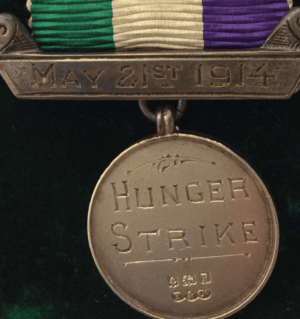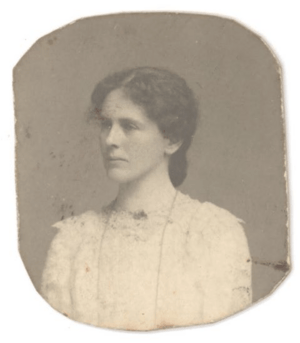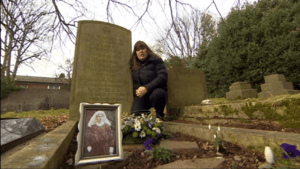Ellen Isabel Jones facts for kids
Ellen Isabel Jones (born Ellen Isabel Cotton, around the 1870s–1946) was an English Suffragette. She was also known as "Nell".
Nell worked closely with Emmeline Pankhurst and Christabel Pankhurst. These women were important leaders of the Suffragette movement. Ellen also knew Madame Yevonde, a photographer who supported the Suffragettes. Madame Yevonde even shared a building with them in Victoria, London.
Ellen's husband, Dr. Ernest Williams Jones, strongly supported her cause. He even gave speeches to help women get the right to vote. This was quite unusual at the time. Men could lose their jobs for supporting women's rights.
Contents
Fighting for Women's Right to Vote
Nell was born in Penkridge, Staffordshire. In May 1914, Emmeline Pankhurst asked her to go to Belgravia. The plan was to throw stones at the windows of big, fancy houses. These houses belonged to powerful people who did not want women to vote. Ellen knew she would likely be arrested and might even be force-fed in prison.
Ellen was arrested, just as she expected. She later wrote from prison that she was "never so relieved to fall into the arms of a man when the Bobby arrested me." She was taken to court, found guilty, and sent to prison.
When she was arrested, she did not give her real name. She was sent to Holloway Prison. There, Ellen went on a "hunger and thirst" strike for five days. She did this to protest that women were not allowed to vote. Many Suffragettes, including Mrs. Pankhurst, were force-fed during their strikes. There is no proof that Ellen Jones was force-fed. However, many women protested this way. To avoid the shame of women dying for their cause, they were often released from prison.
Nell became very weak because of her hunger and thirst strike. She was sent to a nursing home under a law called the "Cat and Mouse" Act. This law meant prisoners could be released to get better, but they were expected to return to prison later. However, Ellen escaped back home to Aldridge. To make sure she got home safely, her husband was told not to meet her. Instead, a family friend named "Bernard" met her on a motorbike and drove her home in his sidecar.

The Women's Social and Political Union (WSPU) gave Jones a Hunger Strike Medal for her bravery.
She spent the next 34 years of her life on the run, trying to avoid being sent back to prison. She passed away in Bedford.
You can find details about these events in her old papers. These papers are kept at The Women's Library in London. This collection is now owned by the London School of Economics. This school is on the same land where the WSPU used to be.
Her story was also shared on two BBC News broadcasts. This happened on February 6, 2018. That day was the 100th anniversary of women getting the right to vote.
Ellen's Family and Helping Others
Ellen was married to Dr. Ernest Williams Jones. He was a doctor from Aldridge, Staffordshire. He was the first general practitioner to earn the M.D. degree. Ellen and Ernest had four boys.
During World War I, many soldiers were hurt in big battles like the Somme and Ypres. They were brought back to England needing medical help. Dr. Jones and Ellen, who was a nurse, turned their house into the Aldridge Auxiliary Hospital. They cared for soldiers recovering from their injuries there.
Dr. Jones was interested in psychoanalysis, a way of understanding the mind. He was also a good friend of another famous person named Ernest Jones, who wrote about Sigmund Freud. Ellen's husband died in 1922 from pneumonia. After his death, she moved to The Spinney in Rottingdean. She raised her boys there with money from guests who paid to stay at their home. In the 1930s, when there was a lot of prejudice against Jewish people, their house became known for welcoming Jewish guests. Many guests came from Vienna, Austria.
Ellen's father, Thomas Cotton, was a lock-keeper in Penkridge.
Sharing Her Story
On February 6, 2018, Ellen's story was shared publicly for the first time. This was the 100th anniversary of women getting the right to vote. Aldridge School organized an event to celebrate. They visited her resting place, and local historians gave a speech about her.
BBC News also showed this event on TV twice on the same day.
See also
 In Spanish: Ellen Isabel Jones para niños
In Spanish: Ellen Isabel Jones para niños



